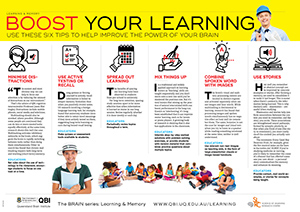What makes memories stronger?

Your experiences in the world are based on information received through a combination of senses: sight, touch, hearing, taste and smell.
Some memories seem seared into our brains, while others are fleeting wisps of recollection. What affects the strength and duration of memories?
Emotional memories
One thing that helps make a memory robust is if it has strong emotional content: you probably still remember your first kiss, or where you were when you found out that a close family member had passed away. This happens because of the amygdala, which brain imaging studies have shown is activated by emotional events. The amygdala boosts memory encoding by enhancing attention and perception, and can help memory retention by triggering the release of stress hormones, such as adrenaline and cortisol, to boost arousal.
While memories of a stressful event can be enhanced, stress tends to have negative effects on memory storage for events that coincide with, but are not the direct cause of, the stress. Stress also alters the way that our brain processes information, changing from a flexible, holistic approach to more rigid stimulus–response associations. This can change the nature of the memory stored, as well as what we recall under stress.
QBI researchers have discovered that bad experiences particularly enhance memory formation about places, and suggest this may serve as a cue to avoid potential threats.
Memory pathways
A good analogy for memory formation is the way foot traffic creates a path along a stretch of grass. The more a patch of grass is trampled as people pass along it, the clearer the path becomes and the easier it is to follow – it’s as if a ‘memory’ of all the walking has been created. The same thing happens in the brain. The more a neural pathway is activated, the stronger the synaptic connections along the way become. Then, when a thought enters our head – say, a tropical beach – we recall related experiences or knowledge, such as putting on sunscreen and the feel of sand, as our minds funnel our thoughts along well-established neural pathways.
How memories are accessed
A memory of the coffee you had with a friend last week, for example, could include the taste and smell of the coffee, the café’s interior design, the sound of an ambulance’s siren as it drove past, and the topics of conversation you discussed. These components of your experience would have activated various parts of your neocortex. But the episode itself would initially be stored in the hippocampus. Over time this memory is consolidated, with its long-term storage thought to be distributed in different parts of the neocortex.
According to one popular theory, the hippocampus is critical, serving as a memory index. To use an analogy: when functioning well, memory is like a digital database or an old-school-style office filing cabinet: something triggers a search of the database, and we retrieve and recall the memory.

When your friend mentions how much she liked the café’s stylish interior, you picture the inside of the café, making your visual cortex – the part of the brain that receives and processes sensory nerve impulses from the eyes – become active in a similar pattern to when you saw the café first-hand. Because of synaptic plasticity and strengthened connections, this visual seed is enough to access the ‘café with friend’ scene in the hippocampus’s index. To actually recall the memory, the hippocampus then directs neuronal traffic back to the appropriate circuits of the neocortex, reactivating the sound of the ambulance siren, the taste of the coffee, the topics of conversation and any other components of the ‘café with friend’ memory.
This idea of memory indexing and recollection is still only a theory.


